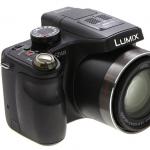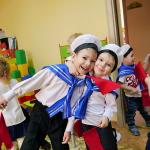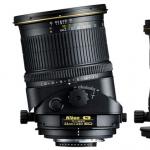Children's electronic presentations and clips. Project activities in kindergarten Children's projects in kindergarten presentation
Svetlana Tsygankova
Presentation on the topic " Project activity in DOW "
Project activities in the preschool educational institution
Compiler: Tsygankova Svetlana Viktorovna
educator
GBDOU "Kindergarten No. 11"
St. Petersburg
1. Projects in a preschool educational institution
Stages of work on project. Classification projects.... 2-3
2. Main steps of the method project. Kinds projects in preschool educational institutions ... 3-4
3. Tasks for the development of children in project activities.... 4-5
4. Algorithm of carrying out projects....5-7
5. Literature on project activities.... 7-8
1. Projects in a preschool educational institution.
Stages of work on project. Classification projects.
From birth, a child is a discoverer, a researcher of the world that surrounds him. Everything for him first: sun and rain, fear and joy. Everyone knows that five-year-old children are called "why". The child cannot find the answer to all his questions on his own - teachers help him. In preschool institutions, educators widely use the method of problem learning: questions that develop logical thinking, modeling of problem situations, experimentation, experimental research activity, solving crosswords, charades, puzzles, etc.
The integrated teaching method is innovative for preschoolers. It is aimed at developing the personality of the child, his cognitive and creative abilities. A series of studies is united by the main problem. For example, giving children a complete picture of pets, the teacher in the cognitive cycle classes introduces them to the role of pets in human life, in the artistic and aesthetic cycle classes - with the images of pets in the works of writers, poets, with the transfer of these images in folk-applied art and creativity of illustrators.
The variability of using the integrated method is quite diverse.
Full integration ( environmental education with fiction, fine arts, musical education, physical development)
Partial integration (integration of fiction and art activities).
Integration based on a single project which is based on the problem.
Transition preschool on the project method of activity is usually carried out according to the following stages:
First stage:
At the first stage, the teacher formulates the problem and goals project, after which the product is determined project. Introduces children to a game or plot situation and then formulates tasks.
The tasks of children at this stage of implementation projects are: entering the problem, getting used to the game situation, accepting tasks and goals, as well as completing tasks project. The last point is very important, since one of the important tasks of the teacher is the formation of an active life position in children; children should be able to independently find and identify interesting things in the world around.
Second phase:
At this stage, the teacher (in addition to the organization activities) helps children plan their own activity in solving assigned tasks.
Children are united in working groups and there is a distribution of roles.
Third stage:
The educator, if necessary, provides the children with practical assistance, as well as directs and controls the implementation project.
Children develop a variety of knowledge, skills and abilities.
Fourth stage:
The teacher cooks presentation on the activities of a particular project and conducts it.
Children actively help in preparation presentations, after which they present to the audience (parents and teachers) product of own activities.
Classification projects:
Currently projects in preschool educational institutions are classified according to the following featured:
By topic and methods of implementation results: creative, informational, playful or research
By composition of participants: individual, group and frontal.
By implementation time: short-term (1-3 lessons, medium duration (1-2 months) and long-term (whole academic year).
2. Main steps of the method projects. Kinds projects.
Several stages:
1. Target selection project.
The teacher helps children choose the most interesting and feasible task for them at their level of development.
2. Development project.
Planning activities to achieve the goal: whom to turn to for help, sources of information are determined, materials and equipment for work are selected, what items to learn to work with to achieve the goal.
3. Execution project
Practical part in progress project.
4. Summing up
Evaluation of the results and definition of tasks for new projects.
By type projects subdivided into the following:
1. Creative.
After incarnation project the result is carried out in the form of a children's holiday.
Research.
Children conduct experiments, after which the results are drawn up in the form of newspapers, books, albums, exhibitions.
it projects with elements of creative games, when the children enter the image of the characters of a fairy tale, solving the problems and tasks in their own way.
Informational.
Children collect information and implement it, focusing on their own social interests. (design of a group, separate corners, etc.).
main goal design method in preschool education is the development of a free creative personality.
3. Tasks for the development of children in project activities.
In pedagogy, the following tasks are identified that determine the development of children in project activities:
Ensuring the psychological well-being and health of children;
Development of cognitive abilities;
Development of creative imagination;
Development of creative thinking;
Development of communication skills.
Tasks of the research activities specific to each age.
At preschool age - this is:
the entry of children into a problematic game situation (the leading role of the teacher);
activation of the desire to look for ways to solve a problem situation (together with the teacher);
the formation of the initial prerequisites for the search activities(practical experiences).
At the senior preschool age - this is:
formation of the prerequisites for the search activities, intellectual initiative;
development of the ability to determine possible methods for solving a problem with the help of an adult, and then independently;
formation of the ability to apply these methods, contributing to the solution of the task, using various options;
development of a desire to use special terminology, conducting a constructive conversation in the process of joint research activities.
4. Algorithm of carrying out project activities in the preschool educational institution
Implementation stages project
Members
Preparatory stage
Thinking about an idea project, collection of information, material for the implementation of the idea.
Teachers of the preschool educational institution, specialists, parents, pupils of the preschool educational institution.
Organizational stage
Formative stage
Planning project, determining the timing of implementation and those responsible for individual stages project. Conducting round tables with parents and teachers, consultations on the topic project and implementation of tasks.
Development of provisions for reviews, competitions, abstracts of classes, scenario of the final event.
Teachers, specialists of preschool educational institutions.
Conducting classes with children by specialists and teachers of preschool educational institutions (complex, thematic, binary, visiting exhibitions in the expo center, museum, etc.
Holding competitions and reviews within the framework of project. Joint work of children, parents and teachers on the creation and design of exhibitions of joint works, photo exhibitions and photo collages on the topic project.
Teachers, specialists of preschool educational institutions, parents.
Teachers, specialists of the preschool educational institution, parents, pupils of the preschool educational institution.
Final stage
Holding a final event (holiday, entertainment). Awarding of winners of competitions and parents thank you letters. Analysis of results project activities. Generalization of experience.
Teachers and specialists of preschool educational institutions, parents.
Rules for holding round tables with parents.
1* Each meeting requires its own "scenario" and extremely clear guidelines, recommendations and advice in the implementation of the stages project.
2* Main working method "round table" is a dialogue, defining ways of interaction between parents, children and teachers within the project.
3* Parents are invited to the meeting "round table" and notified of the agenda no later than 5 days before the date of its holding.
4* Specialists of preschool educational institutions, educators of age groups are invited to the meeting.
5* Cognitive information for parents is given, revealing approaches to the implementation of this project.
6* Based on the results of the meeting, ways of interaction between parents, children and the teaching staff are determined, the content of the work and the timing of implementation are determined.
Project the method can pass through all kinds of nursery activities in preschool. It encourages teachers to improve their professional and creative level, which undoubtedly affects the quality of the educational process. It pushes for active interaction of all specialists of the preschool educational institution, parents of pupils and the organization of society. Forms in preschoolers the ability to plan and independence in solving the problem, contributes to the development of cognitive and creative activity.
1. Vinogradova N. A., Pankova E. P. Educational projects in kindergarten . Handbook for educators. M.: Iris-press, 2008. - 208 p.
2. Veraksa N. E., Veraksa A. N. Project activities of preschoolers. Handbook for teachers of preschool institutions. - M.: Mosaic-sintez, 2008. - 112 p.
3. Kiseleva L. S. et al. Project method in activity preschool institutions: - M.: ARKTI, 2003. - 96 p. four.
4. Penkova L. S. Under sail Summer floats on the Earth (organization of playgrounds in the summer) Toolkit for employees of preschool institutions, students of pedagogical universities and colleges. - M.: LINKA-PRESS, 2006. - 288 p.
5. Timofeeva L. L. Project method in kindergarten. "Cartoon with your own hands". - St. Petersburg: LLC "Publishing house "Childhood Press", 2011. - 80 p.
6. Shtanko I.V. Project activity with older children preschool age. // Management of a preschool educational institution.
Topic: Project activity
Individual educational project "Compass""Compass" An individual educational project, the purpose of which is to get acquainted with the "compass" device and the rules for its use.
Individual research project "Where does Electricity come from"Once I was playing with a balloon and suddenly my hair went up. I asked my mother how it happened, she said it was static electricity. It surprised me and...
Microbes - Who or What is it?Mom very often says that you need to wash your hands with soap after the street, be sure to wash fruits and vegetables before eating. She warned that some bacteria would get into my body and...
Cognitive research project "What do we know about water?"The purpose of the project is to form the ecological education of preschool children, to intensify the mental and search activity of children. - To form children's ideas about water. - To study the properties of water in different states.
Project activity "Introduction to dinosaurs"As part of the conference for preschoolers "I want to know everything 2017!" for the provision of creative projects, Sergey L. (5 y.o.) presented his project "Introduction to dinosaurs" and took 1st place in the district. Leader...
Project activities in senior group"Safe Childhood"The relevance of this problem is determined by the real needs of the system of preschool education and early informing the child about the rules of safe behavior in his environment, mastering the appropriate skills; the needs of life in the accumulation of a child ...
Lepbook - Rules trafficThe didactic manual lapbook "Rules of the road" is an A3 cardboard folder glued with paper. The folder has various pockets, cards that contain information on the topic. Didactic manual lapbook "Rules ...
Belgian giantIndividual educational project about the Belgian rabbit
Everyone knows the onion. Who is a friend and who is an enemy? (project grade 3)The relevance of this topic is that I will be interested to see the final result research work and tell your classmates about it. The purpose of this work is to study the conditions and dynamics of onion growth, ...
The influence of the Red Book on the formation of the civic position of a junior schoolchildthis work, presented by students of the 2nd grade at the city scientific-practical conference "Step into the Future. Junior" The purpose of the work: the influence of knowledge about the Red Book on the formation of civil responsibility for the disappearance of animals and plants. ...
How my cities smell (project)Cities have their own specific smells. Inhaling the aroma, you keep the best memories of this city in your memory. My favorite cities are Moscow, Zheleznovodsk, Naberezhnye Chelny, Petropavlovsk-Kamchatsky, each smells special...
Journey to SymmetryThe purpose of the lesson: to give an idea of \u200b\u200bsymmetry, its types. Tasks: to form the concept of symmetry as the law of beauty and harmony; to acquaint students with a sign by which one can distinguish a “symmetrical object” ...
Project "Russian hut"This project covers the topics: "Decoration of the Russian hut"; "The Way and Way of Life of the Russian People"; "Ancient roots of folk art"; "Decorative and applied art in human life"; "Folk crafts"; "Folk traditions and customs of the Russian...
Bees are our friendsThe purpose of the presentation is to study the bee from different angles: - as a species of insect, the history of its development; - as a character in literary works; - as an object of medicine and cooking.
Dictionary word "cow". 
























1 of 25
Presentation on the topic: Project activities in the preschool educational institution
slide number 1

Description of the slide:
slide number 2

Description of the slide:
Purpose: introduction of design technology into the activities of a preschool institution. The agenda of the teachers' council: Implementation of the decision of the previous teachers' council (Deputy Head I.V. Borchaninova). The relevance of the theme of the teachers' council. The concept of the design method. Types of projects used in the work of a preschool institution. (Deputy manager I.V. Borchaninova) Planning of work on preparation of the project. (Deputy head I.V. Borchaninova) Pedagogical improvisation “Who wants to become an expert in the project method?” (Deputy head. I.V. Borchaninova) Adoption of the decision of the teachers' council. (Head T.E. Loskutova, Deputy Head I.V. Borchaninova)
slide number 3

Description of the slide:
“Trial and error is pretty good. But it also happens that the “experimenter” after another “trial” never makes mistakes again. Therefore, study the experience of others, read more wise books. Everything has been described many times. Find the root of the problem, grab it tight and follow it steadily. That's all". (From the instructions of Genesha)
slide number 4

Description of the slide:
A project (literally "thrown forward") is a prototype, prototype of an object or type of activity, and design is the process of creating a project. The project method is a learning system in which children acquire knowledge and skills in the process of planning and performing gradually more complicated practical tasks - methods (pedagogical dictionary)
slide number 5

Description of the slide:
The feasibility of using project activities in preschool educational institutions It is one of the methods of developmental learning and self-education; Promotes the development of research skills; Promotes the development of creativity and logical thinking; Combines the knowledge gained in the course of methodological activities in preschool educational institutions and professional communities, advanced training courses; It is one of the forms of organization of educational work; Increases the competence of the teacher; Improves the quality of the educational process; It involves stimulating the work of project team members;
slide number 6

Description of the slide:
Basic requirements for the use of the project method Presence of a problem that is significant in research and creative terms Independent activities of teachers under the guidance of a teacher coordinating the project Use of research methods that provide for a certain sequence of actions Practical, theoretical psychological and pedagogical significance of the expected results results
slide number 7

Description of the slide:
Typology of projects in preschool educational institutions (according to E.S. Evdokimova) By dominant activity (Research, information, creative, game, adventure, practice-oriented By the nature of the content (Child and family, child and nature, child and man-made world, child and society and his cultural values By the nature of the child's participation in the project (Customer, expert, executor, participant from inception to obtaining results) By the nature of contacts (Within one age group, in contact with another age group, within the preschool educational institution, in contact with the family, cultural institutions, public organizations) By the number of participants (Individual, pair, group, frontal) By duration (Short-term, medium-term, long-term) PROJECT
slide number 8

Description of the slide:
The sequence of actions when creating a project Determining the relevance of the problem and the tasks of project activities arising from it. Proposing a design hypothesis. Search for design research methods (monitoring procedures, experimental observations, statistical methods). Discussion of ways to design the final results. Collection, systematization and analysis of the obtained data. Summing up the final, material results and their presentation. Formulating conclusions and putting forward new problems for research. Distribution of pedagogical experience.
slide number 9

Description of the slide:
The content of the project activity Development of projects and mini-projects by the teacher. A clear formulation of the project: goals, means, program of action. Evaluation of the project according to the criteria in accordance with the requirements of the integrated certification system (examination of the educational project). Introduction by the head of the preschool educational institution of changes and additions to the educational project. Presentation and defense of the project. Registration by the teacher-leader business card project and folder. Consultations of teachers by heads of preschool educational institutions.
slide number 10

Description of the slide:
Comparative characteristics of projects project goal structure result Information Study of the object. Analysis and generalization of facts Obtaining and processing information according to the established methodology Report, album, presentation Creative Accumulation of creative experience. The development of fantasy and imagination is not worked out in detail, only outlined. Subordinate to the final result A film or concert with a clearly thought-out structure Game Accumulation of game experience Not worked out in detail, only outlined. Subordinate to the final result Expected, clearly defined, oriented to social interests Practice-oriented Enrichment of social-practical experience The structure is thought out. Clear organization of work at each stage Expected, clearly defined, focused on social interests
slide number 11

Description of the slide:
Objectives of the presentation Teaching teachers of project activities. Teaching teachers how to present themselves and their work. Increasing motivation, interest in professional activity. Providing educators with opportunities for self-expression and public speaking.
slide number 12

Description of the slide:
Functional responsibilities project team leader educational field, setting goals, formulating the conceptual idea and the theme of the project. Drawing up a rationale for the project being created, determining the final result, its positivity. Detailing the content, structuring the project material. Determining its scope, the research role of the project participants. Coordination of activities of project participants. Ensuring constant control over the progress and timing of project stages. Conducting consultations with project team members. Assistance to teachers in the preparation of documentation for the defense of the project. Identification of shortcomings, determination of ways to eliminate shortcomings. Personal responsibility for the correct presentation of the content.
slide number 13

Description of the slide:
Variability of the project algorithm Algorithm 1st step 2nd step 3rd step 4th step 5th step 6th step First An intriguing beginning that meets the needs of children. Designation of a problem for adults. Definition by adults of the purpose of the project, its motivation. Involving children in the planning of activities and the implementation of the planned plan. Joint movement of adults and children to the result. Joint analysis of project implementation. Experience the result. no Second Joint highlighting of a problem that meets the needs of both parties. Joint definition of the goal of the project, upcoming activities. Predicting the result. Planning activities by children with little help from adults. Determination of means and methods of implementation. Implementation of the project by children. Differentiated assistance from adults. Discussion of the results and progress of work, the actions of each. Finding out the reasons for success and failure. Together with children, the definition of design prospects. Third Joint highlighting of the problem that meets the needs of both parties. Independent determination by children of the purpose of the project, upcoming activities. Predicting the result. Children planning activities, determining the means of implementing the project with the participation of an adult as a partner. The implementation of the project by children, creative disputes, agreements, mutual education, helping children to each other. Discussion of the results and progress of work, the actions of each. Finding out the reasons for success and failure. Determination of prospects for the development of project activities.
Project participants
- The teacher of MBDOU "DS No. 28 "Cheburashka" - Balyuk Natalya Alekseevna.
- Children over- preparatory group MBDOU "DS No. 28 "Cheburashka".
- Parents.
Introduction
In the process of life, it is common for a person to leave all sorts of garbage and various waste behind him.
Every day we throw away a lot of garbage: plastic bottles, food packaging, plastic bags, glass containers, boxes, candy wrappers... It's impossible to list everything.
Previously, we did not think about the fact that much of this garbage can get a new use, becoming the basis for the original crafts. And if you throw less garbage, then environment will be more environmentally friendly.
Relevance of the topic
We often with children older than the preparatory group go on excursions to the park: to the eternal flame or to collect natural material for crafts. My children began to pay attention to garbage: candy wrappers, plastic bottles that are lying on the ground and began to resent that people do not care about nature. Coming back to kindergarten, we always discussed this problem with the children.
The upbringing of a creative attitude to work (the ability to see beauty in everyday things, to experience a sense of joy from the labor process, the desire to know the secrets and laws of the universe, the ability to find a way out of difficult life situations) is one of the most complex and interesting tasks of modern pedagogy.
Target:
The main goal in this direction: development of creative abilities in children through the creation of crafts from various materials.
Formation of the foundations of rational nature management.
Tasks:
To achieve this goal, the following tasks were identified:
contribute to the knowledge of the properties of the material, the desire to experiment with them;
develop the ability to create artistic images;
develop an eye, dexterity of movements of hands, fingers, the ability to own tools and materials.
Stages of project implementation.
Preparatory
During the first week of the start of our project, my children and I decided to track what kind of garbage is most often thrown away in kindergarten and at home. To do this, I decided to involve my parents.
We learned that household waste accumulates the most at home. These are paper, plastic and food waste. And in kindergarten, paper is mostly accumulated.
The next step of our project was to watch a presentation about what kind of waste there is and what can come out of this garbage.
Photo from the Internet.
Then they started collecting waste. After using colored and white cardboard, a lot of packages remained, when the children drank juice at home, there were cocktail tubes, and Vanya's parents left me with a piece of the substrate.
The main stage of the project implementation
And now the most interesting moment has come, we started making crafts.
New life for an old cover. "Gift Bag"
From the cardboard cover, the children suggested making handbags. We folded a large sheet of cardboard in half, cut off a strip of the desired size from another piece, folded it like an accordion and glued it on the sides, cut off a narrow strip - a handle
Beautiful beads for dolls will be obtained from cocktail tubes.
The girls offered to make beads out of cocktail tubes. We cut tubules of different sizes, strung them on a thread and tied them. Very easy and simple, but it turned out beautifully.
Beautiful snowflakes will come in handy to decorate the group.
Soon New Year and the children and I decided to make an unusual decoration, snowflakes from the substrate. Cut strips of different lengths and glued them together.
Family work.
Acquaintance with the theme of the project.
Assistance in the selection of the necessary materials.
Advice for parents "What can be done from waste material", "Piggy bank of ideas".
Practical advice in the corner for parents.
Mom is the first assistant in any business!
Fork fan.
When the parents learned the topic of the project, they became very interested and decided to take part. Grisha Somko's mother, Ekaterina Yurievna, offered to make a fan with her son from disposable forks. Made a blank fan. Forks were glued onto the disk in a semicircle. The disk was wrapped with twine, decorated with ribbons and beads.
Fan of spoons.
Polina Kramar's mother, Irina Alexandrovna, also decided to make a fan, but from disposable spoons. First, I made a blank from spoons and a disk and decorated it with ribbons.
The final stage
Exhibition of works
Conclusion:
Thus, engaging in artistic and creative activities using various materials, including waste materials, contributes to the development of children's creative abilities.
Performed
Kravchenko Irina Anatolievna
Educator of the first qualification category
MKDOU Veselovsky kindergarten

During the introduction of the Federal State Educational Standard for Preschool Education, kindergarten teachers often began to use the design method in their work. This allows you to successfully plan both the educational process and its results. Project activity has become a bright, developing, interesting method in the work of teachers. If you apply this method systematically, then you can track the effectiveness.
The ability of a teacher to analyze the result of his work, the development of a child as a person who can think, plan, implement, be able to apply the resulting product of his work in life, in practice - these are important qualities of modern education.






Stage 1. The educator, together with the children, formulates the problem, looks for solutions, collects information together with the children, and involves the parent community. Schemes are created, templates, file cabinets, attributes and other necessary material are prepared.
It is decided where, in what place, the selected project will be implemented, the terms that will be spent for its implementation are stipulated.

Stage 2 . The work plan is determined. System-forming factors are selected. Deadlines are set. The teacher takes an active part in the development of the project, provides assistance if necessary, directs the children, but in no case does the work that the children themselves can do. In the process, children should develop and form certain skills, acquire new useful knowledge and skills.

Stage 3. There is a self-examination, a mental evaluation of one's activity, one's work. When checking the project, they suggest how it can be used in practice, how the work on the project will affect the participants in this project.
Develops a sense of responsibility for the quality of their project.
After this action, the implementation of the project in practice begins.

Stage 4. We organize a presentation of the project (holiday, entertainment, KVN) or compose an album, etc. Summing up: we speak at the pedagogical council, the round table, we generalize the experience.

Indicators of the effectiveness of the implementation of the design method in the educational work of the preschool educational institution:
A high degree of development of curiosity of children, their cognitive activity, communication, independence;
- increasing the readiness of children to study at school;
- development of children's competencies;
- positive dynamics of children's attendance at preschool educational institutions;
- active participation of parents in projects.
The priority for us is
solving the following problems:
- ensuring the comfort of the child's stay in kindergarten;
- formation of a healthy lifestyle;
- Improving the quality of preschool education.



Using the project method in working with preschoolers, I have implemented the following projects:
In the junior-middle group:
- "My toy (Dymkovo toy)"
- "Pets and their babies"
- "Signs of Spring"
- "Safety Week"
In the senior group:
- "Golden Autumn"
- "My family".
- "Professions and Tools"
In the preparatory group
- « Undersea world»

It is not difficult for us to carry out the project,
He captivates and the covenant forward!
It helps to make friends and unite,
And gives us new ideas!

Thanks





